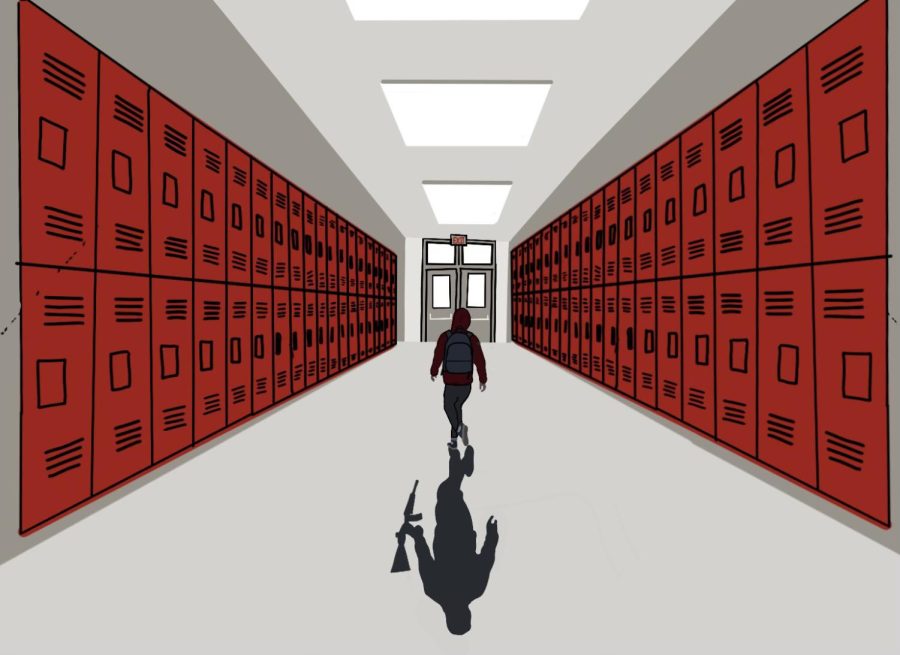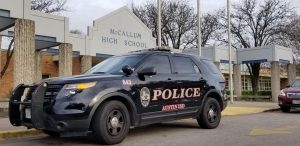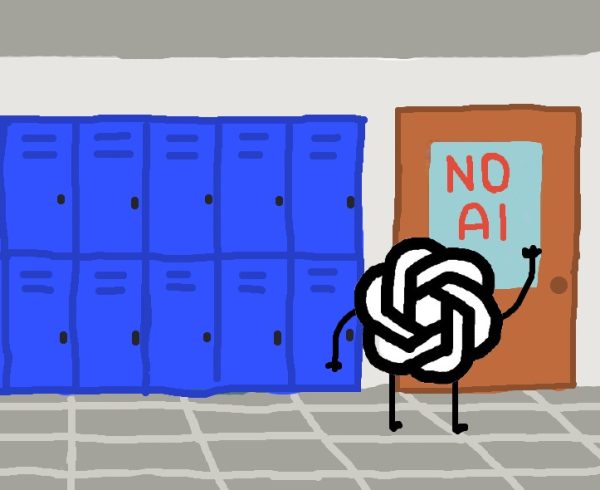A Band-Aid for a bullet wound
New safety policies implemented for the 2022-23 school year, while a start, are not a proactive response to school shootings
As the time between mass school shootings have passed and as the shootings become more and more part of our everyday reality, we have become desensitized to the fact that 20 children under the age of 8 were gunned down and killed at Sandy Hook Elementary School in Newtown Connecticut almost 10 years ago. How have we not done more?
It’s not an if, it’s a when.
This year, there have been 152 incidents of gunfire on school grounds in the United States. 50 deaths. 122 injuries.
And what is the response?
At McCallum, it amounts to the locking of all outside doors, keeping classrooms closed at all times and the implementation of the Raptor app that connects all faculty in case of an emergency.
These policies could save lives. But these policies don’t address the problem: how to stop a school shooting from happening.
Will an active shooter be deterred by a locked door? Will students hiding under their desks be able to walk away from an incident?
There is a better solution. And it falls upon policy makers.
At the local level, districts invest time and money into training that prepares teachers in the event of an active shooter. In addition, they subject students to active shooter drills and provide campuses with resources like the Raptor app and signage with meaningless slogans.
But this approach looks to cure the symptom, not the cause.
In four out of five school shootings at least one other person had knowledge of the attacker’s plan but failed to report it. With 93% of these attacks being planned in advance, it seems reasonable for districts to utilize some of the funds allocated toward training and drills to provide greater awareness to students about type of warning signs to look for.
null
null
According to the American Psychology Association warning signs of violent behavior in teens can range from a history of vandalism or property damage to increased risk taking behavior.
And with some signs as simple as having been a victim of bullying, the behaviors may not be obvious to those who interact with the individual daily.
Here is where the state comes in.
Texas lawmakers can advocate to provide more substantial funding to schools specifically for use in SEL instruction that focuses on proactive responses to concerning behavior.
Our generation has been defined by school shootings.
Columbine. Parkland. Uvalde.
While our parents had tornado drills, we’ve grown up to fear going to school. We’ve been taught to hide, to fight back and to plan escape routes in case of a tragedy. This is not the solution.
The ever increasing amount of shootings brings not reform, but normalization. As the time between these events pass and school shootings become more and more part of our everyday reality, we become desensitized to the fact that 20 children under the age of 8 were gunned down and killed at Sandy Hook Elementary School in Newtown Connecticut almost 10 years ago. How have we not done more?
Thoughts and prayers are not enough.
Reactionary approaches are not enough.
Until policies begin to change, children will continue to die.
We, students, have done our part in advocating for change. Now, legislators must listen.
Your donation will support the student journalists of McCallum High School. Your contribution will allow us to purchase equipment and cover our annual website hosting costs.




![Students from schools all across AISD raise signs and chant as the march towards the Capitol Building as part of the National Student Walkout to protest gun violence on April 20. “The reason I came is because three of my friends have died because of gun violence in the last two months,” Robert Spong said. “It is a defining issue and, [from] what I’ve seen today, I really think we’re going to make a change.” Photo by Kristen Tibbetts.](https://macshieldonline.com/wp-content/uploads/2018/05/kristen.tibbetts_walkout_03-300x235.jpg)







Jordyn Berger • Dec 12, 2022 at 2:05 pm
I think this story is outstanding! It explains what has happened over the years of school shootings, the action inside of school shootings and the outcomes of them. It shows how unsafe schools are and the lives that are lost by this. This story also tells us how the students have fought and protested back for safer schools but the district, government, police and the community in general have failed to reach the standard of keeping people safe.